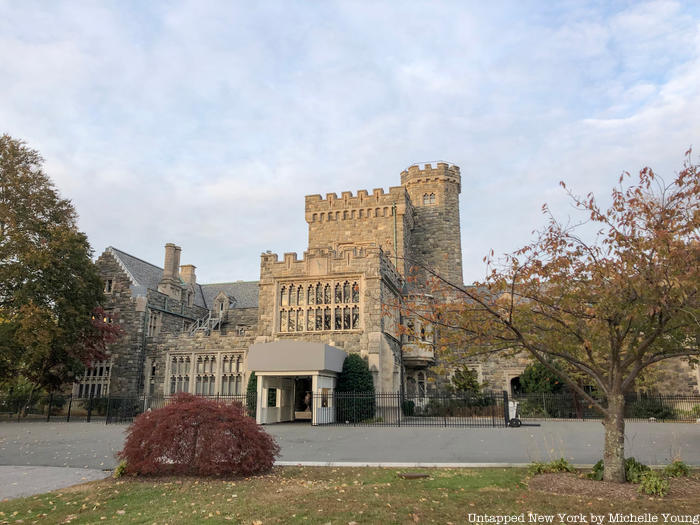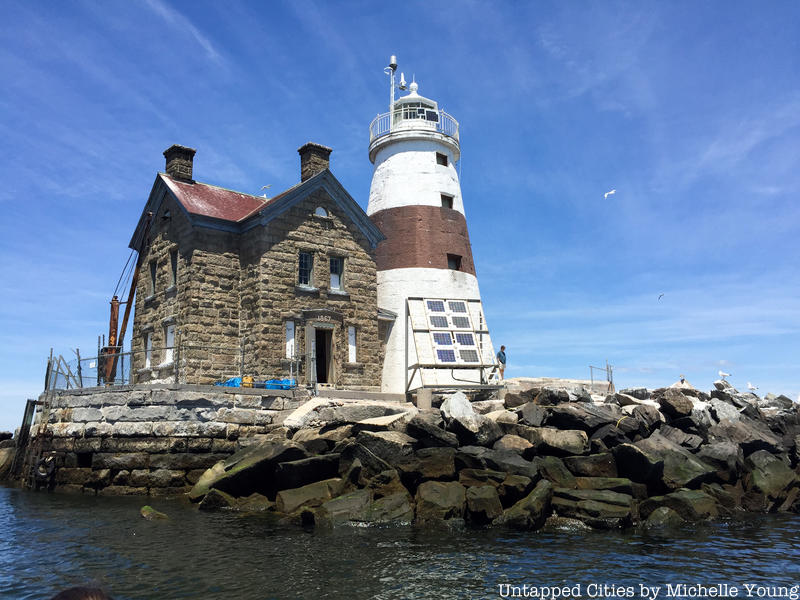Port Washington, consisting of four villages — Baxter Estates, Manorhaven, Port Washington North, and Sands Point — is one of the most affluent communities in Nassau County with a lively downtown, numerous marinas and parks, and beautiful scenery. Baxter Estates was originally a homestead settlement in 1673 known as “Cow’s Neck.” In 1741, Oliver Baxter purchased the property, which at the time was believed to have been the location of a Matinecock Indian village. Port Washington became a significant sand-mining town with easy access to Manhattan, attracting figures like the Vanderbilts and mining magnate Daniel Guggenheim to build properties in Sands Point.
Today, Port Washington offers scenic views of both the water and a number of historic sites like the John Philip Sousa House, where the famous composer lived for the last 20 years of his life, and the Thomas Dodge Homestead, dating back to 1721. Here is our guide to historic places to visit Port Washington!
1. Sands Point Preserve
 Hempstead House
Hempstead House
The Sands Point Preserve contains elegant and grandiose relics of the Gold Coast period of the early 20th century. The Gold Coast period saw the development of huge mansions along the Long Island Sound, and the Sands Point area gained fame as “East Egg” in F. Scott Fitzgerald’s The Great Gatsby; nearby Great Neck inspired the competing “West Egg” in the novel. Sands Point Preserve is a 216-acre park with hikes and walks, landscaped gardens, and a number of historic sites and structures.
The Tudor style Hempstead House, Castle Gould, Mille Fleur and Falaise are four mansions that sit on the former grounds of the Guggenheim Estate. The first home was started by Howard Gould, an American financier, and son of railroad magnate Jay Gould. The original plan was to build a replica of Kilkenny Castle in Ireland and call it Castle Gould. It was designed by architect Augustus N. Allen and completed in 1904. Upon completion, Gould’s wife Katherine Clemmons decided that the castle did not suit her, so Gould proceeded to build Hempstead House.
 Hempstead House, Photograph Courtesy of The Sands Point Preserve Conservancy
Hempstead House, Photograph Courtesy of The Sands Point Preserve Conservancy
Although the Goulds chose not to live in their castle, the structure served as a stable, carriage house, and servants’ quarters. It now houses the Visitor Center, Great Hall, and a 7,000-square-foot New York State-certified sound stage. With vaulted ceilings and wrought-iron chandeliers, the Great Hall is often used for private events.
Hempstead House was designed by architects Hunt & Hunt in 1912. The 50,000-square-foot three-story mansion is 225 feet long and 135 feet wide with forty rooms, including a 60-foot-tall entry foyer. Significant features of the home include a Wurlitzer Opus 445 Theatre Organ, authentic Tudor and Jacobean antiques imported from Europe, and a Billiard Room which originally featured a gold-leaf ceiling. After the Goulds, it was owned by Daniel Guggenheim, an American mining magnate.
 Falaise, Photograph Courtesy of The Sands Point Preserve Conservancy
Falaise, Photograph Courtesy of The Sands Point Preserve Conservancy
Following Daniel Guggenheim’s death, his wife Florence closed Hempstead House and built the smaller mansion Mille Fleur. The Hempstead House was open to children evacuated from World War II until foster homes could be found for them. Florence then sold the mansion to the Institute of Aeronautical Sciences, which was then purchased by the U.S. Navy for a Naval Training Device Center.
The fourth mansion, Falaise, was presented to Daniel’s son Harry F. Guggenheim and his wife Caroline Morton in 1923. Falaise was built by Frederick J. Sterner along with Polhemus & Coffin in the style of a 13th-century Norman manor house. The home includes an enclosed cobblestone courtyard, a round tower, and thickly mortared brick walls, and the mansion’s medieval atmosphere is conveyed through archways, thick wood beams textured plastered walls, and carved stone fireplace mantels. 16th and 17th-century woodcarvings, sculptures, columns, gates, Renaissance paintings are found in Falaise, as is a notable rose garden.






